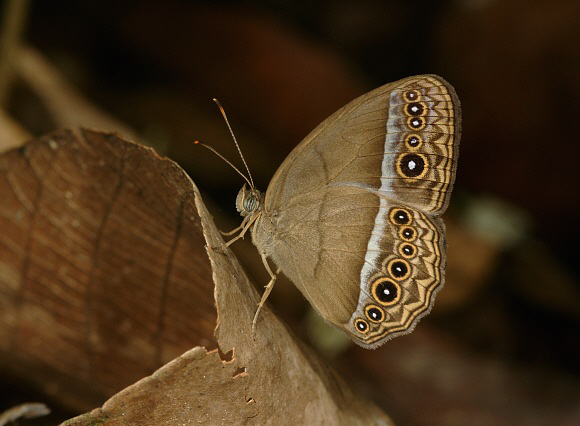
Introduction
Mycalesis is one of the largest Satyrine genera, comprising of 88 known species, of which 2 have yet to be given scientific names. The genus is confined to the Oriental and Australian regions. They are instantly recognisable as a group, all being some shade of brown on both wing surfaces, and marked with a series of conspicuous ocelli, and a single straight median line across the underside of both wings. Many of the species are very similar, but can usually be distinguished from each other by close examination of the configuration of the ocelli and submarginal lines.
Mycalesis orseis is found in India, Myanmar, Thailand, West Malaysia, Singapore, Sabah, Sarawak, Brunei, Kalimantan, Sumatra and Palawan ( Philippines ).
The butterfly is quite easy to distinguish from other Mycalesis species due to the yellow-ringed and evenly sized ocelli, pale yellowish serrated submarginal line, and the faint hint of purple in the white median band.
Habitats
This species is found in open areas of primary rainforest, mainly along the narrow forest trails, at elevations between sea level and about 200 metres.
Lifecycle
The lifecycle does not appear to be recorded, but it can be assumed that the egg will be spherical, white or yellowish in colour and glossy. The larva is likely to be greenish or brownish in colour, with a dark head which bears a pair of short horns. It will feed nocturnally on either grasses, sedges or bamboos. The pupa will be of the usual plump Satyrine shape, probably pale green, and unmarked except for minor striations or dots. It will probably be suspended from a stem or the underside of a leaf in the vicinity of the foodplants.
Adult behaviour
The butterflies tend to be found along narrow trails at spots where dappled sunlight penetrates to ground level. They fly infrequently and always keep low to the ground, settling on dead leaf litter rather than living foliage. The flight is slow, bobbing and erratic, as is typical of Satyrines. I have not observed nectaring or mud-puddling in this species.
